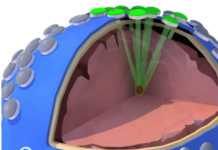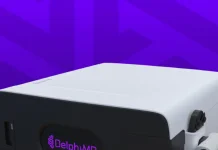Startup Eyenuk plans to expand global access to AI-powered eye screening technology with $26 million in fresh funding.
With the series A raise, the global artificial intelligence digital health company has brought in more than $43 million in total funding. The fresh capital was raised by round leader AXA IM Alrs with new and existing investors including T&W Medical A/S, A&C Foelsgaard Alternativer ApS, Kendall Capital Partners and KOFA Healthcare. The new funding will allow for the adoption of Eyenuk’s applications for AI-based eye screening and AI predictive biomarkers throughout 18 countries including robust development in the U.S., company executives said.
“We already have systems that we are going to expand,” said Eyenuk CEO and founder Kaushal Solanki, Ph.D. “We think of ourselves as a global company and that’s because diseases have no boundaries. Half a billion people worldwide have diabetes and need vision screenings annually. Our mission is to screen every eye in the world. All of our decisions from a technological perspective, building robust systems that scale to commercial size, building teams and partnerships at scale are all to achieve this mission.”
Eyenuk’s EyeArt system was the focus of a peer-reviewed study published Sept. 29 in Ophthalmology Science. The study revealed that the EyeArt AI system was far more sensitive and successful in uncovering diabetic retinopathy than traditional dilated eye exams performed by ophthalmologists and retina specialists.
The series A capital will be used to expand the reach of this technology from ophthalmologists’ offices to primary care clinics, pharmacies and potentially through senior care outreach. “Wherever the patients are,” said Solanki.
Diabetic retinopathy detection and treatment can reduce the risk of blindness by 95%; however, half of Americans living with diabetes do not receive their annual eye exam. Patients face barriers to getting their eye exams such as long waits and difficult-to-access providers, leading diabetic retinopathy to be the leading cause of blindness in working adults.
EyeArt’s primary competitor, IDx-DR, also uses AI technology to assess retinas and the threat of diabetic retinopathy. A recent study in the journal Nature marked IDx-Dr diabetic retinopathy sensitivity at 87%, a notable uptick from 21% when assessed by general ophthalmologists or 60% by retina specialists. Ophthalmology Science marked EyeArt’s accuracy at 97%. For those extra patients out of 100, that makes a difference, Solanki said.
Both EyeArt and IDx-DR have been cleared by the FDA for point-of-care screening. While both provide assessments of mild diabetic retinopathy, EyeArt also detects vision-threatening diabetic retinopathy, company executives said.
RELATED: OSSIO Closes Series C Financing of $38.5 Million
“EyeArt flags more mild cases than competitors, but it also tells the patient and the provider whether the patient has vision-threatening diabetic retinopathy, and as the name implies, this is a situation where a patient might be on the verge of losing vision,” Solanki said. “If it’s caught early, treatment can be delivered. Diabetic retinopathy progresses without any symptoms. So even in vision-threatening situations, a patient might see 20/20 until the day he wakes up with blurry vision, and it’s too late to do something about it.”
Since its FDA clearance in 2020, the EyeArt system has been used in over 200 locations in 18 countries, including 14 U.S. states, to screen over 60,000 patients and counting. The EyeArt system is reimbursed by Medicare in the U.S. and has regulatory approvals globally, including CE marking, Health Canada license and approvals in multiple markets in Latin America and the Middle East, according to the comp;any
With a digital fundus camera, screenings can become a regular part of care for diabetic patients. Solanki emphasizes that the upfront cost of the retinal camera may be steep for rural clinics, but those costs can be managed via screening reimbursements from Medicare. He predicts the same camera being used for additional future screenings.
Eyenuk is working to expand which diseases can be predicted and measured through retinal screening including stroke risk and cardiovascular risk. Currently, the company’s technology is being used by the Mayo Clinic in a National Health Institute-funded study to explore potential ways to predict Alzheimer’s disease through the eye.
“Eyes are a unique organ in our body that allows for noninvasive imaging of a number of things like central nervous system with the optic nerve head being an extension of the brain, the arteries, the veins, so all this leads to noninvasive imaging to detect what may be going wrong inside the human body,” Solanki said. “So, if there is microvasculature as issues in the retina, you can be sure that they have issues in the heart or the kidneys.”
“We continue to be very impressed with the Eyenuk team’s accomplishments in developing and broadly commercializing a cost-effective solution to one of the world’s most pressing healthcare concerns—the enormous global burden of preventable vision loss that progresses without any symptoms,” said Zina Affas Besse, Ph.D., deputy head of healthcare private equity for AXA IM Alts, in a statement.
Follow the latest news on Guided Solutions






